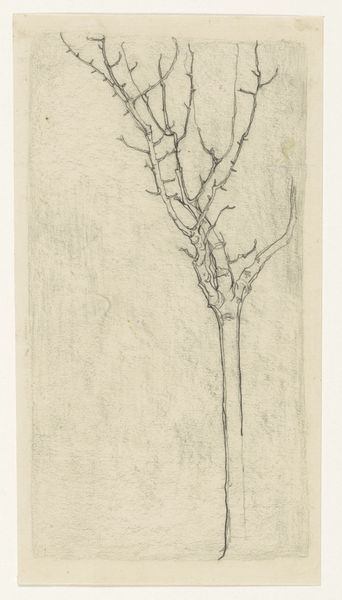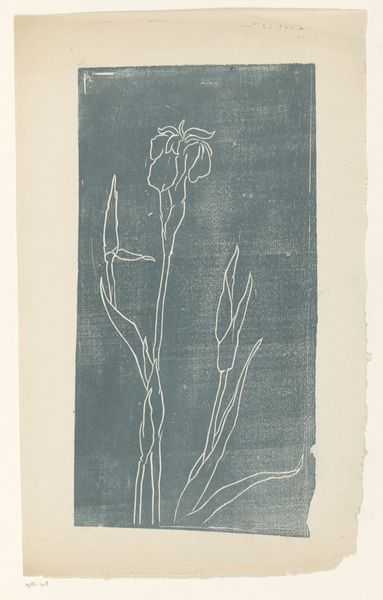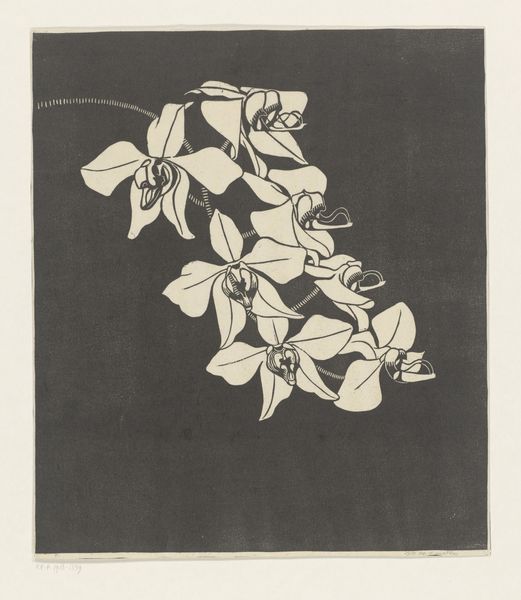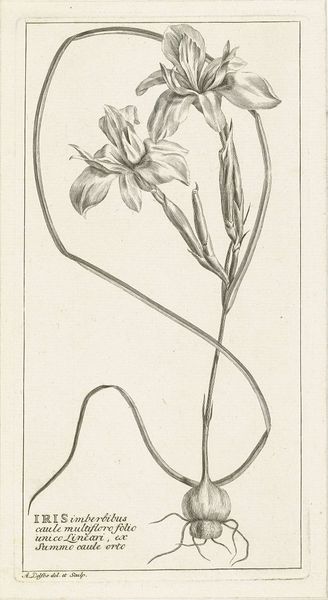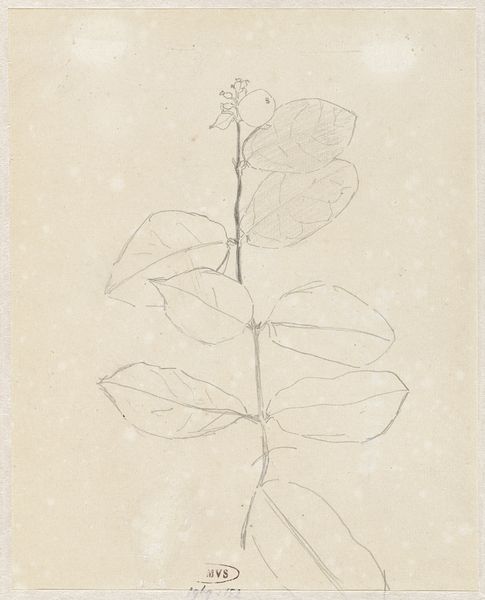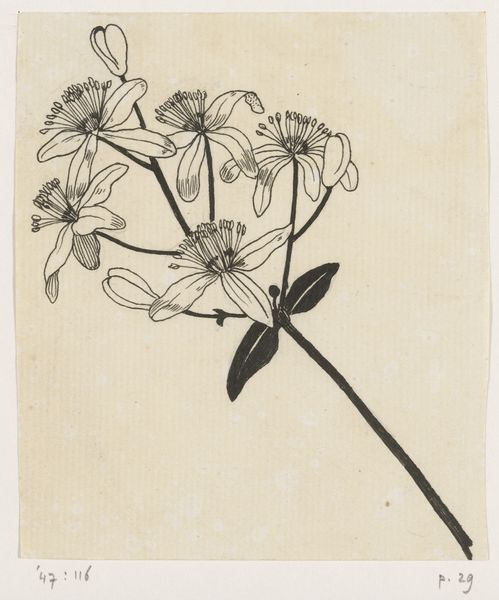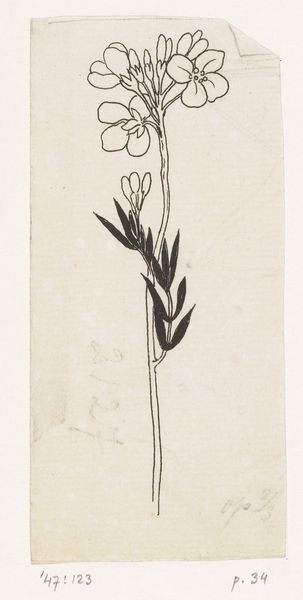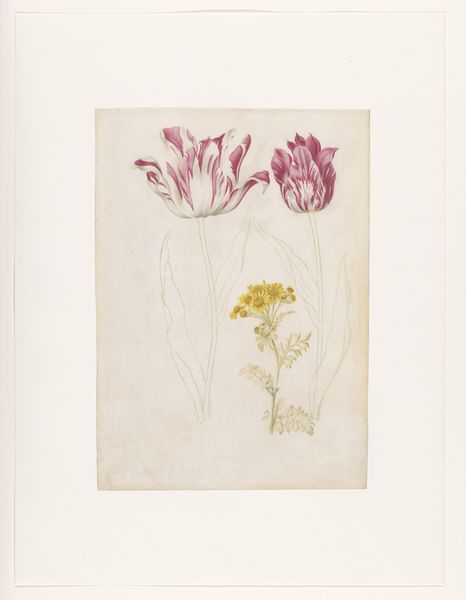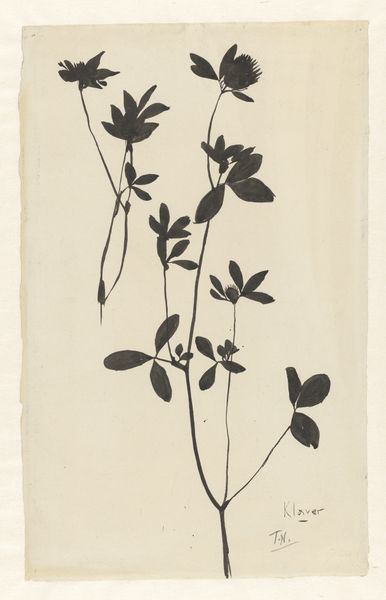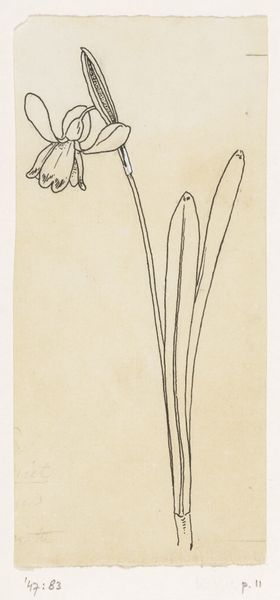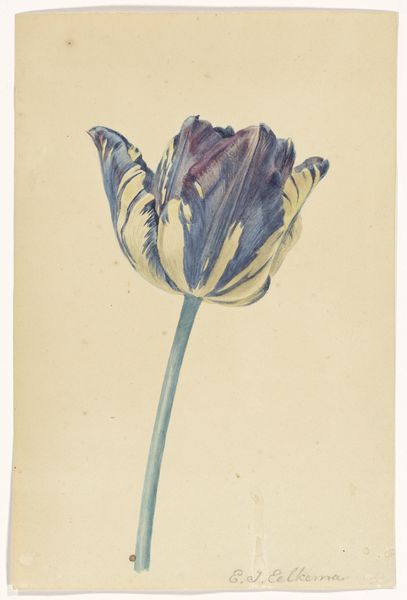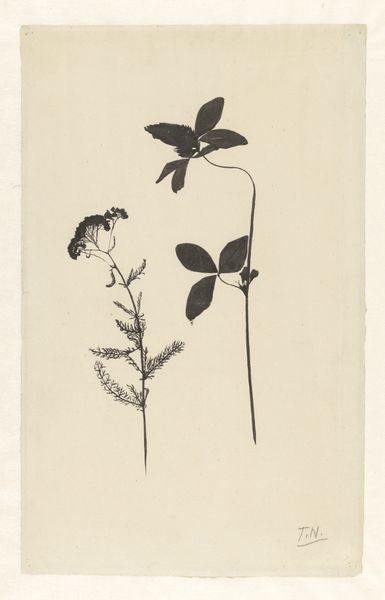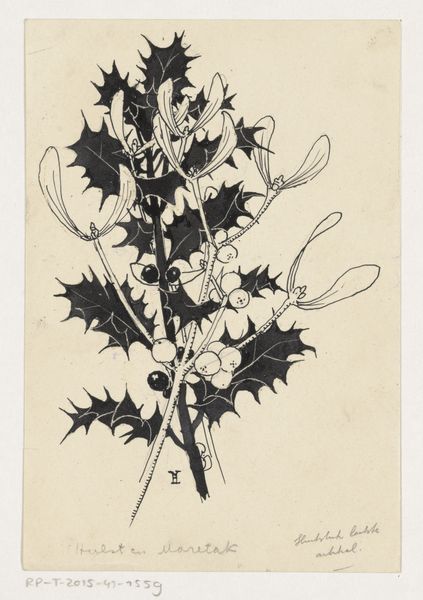
drawing, paper, ink
#
drawing
#
paper
#
ink
#
pen-ink sketch
#
abstraction
#
line
#
sketchbook drawing
Dimensions: height 225 mm, width 59 mm
Copyright: Rijks Museum: Open Domain
Editor: Here we have Theo Colenbrander's "Klokjes," possibly from 1919. It's a drawing using ink on paper, quite linear and sparse. There's a whimsical, almost tentative quality to the lines, especially in the flower's abstracted form. What do you see in this piece, looking beyond the immediate image of flowers? Curator: I find the stark simplicity of the line work quite compelling. Notice how the artist employs line not just to delineate form, but also to suggest volume and texture. The composition hinges on the interplay between the solid blocks of muted color and the negative space defined by those firm lines. What effect do you think that contrast has? Editor: It gives the piece a sort of fragmented quality. The flowers aren’t fully realized, they’re implied. It feels very modern. Curator: Precisely. Observe how Colenbrander distorts and rearranges elements to fracture and reassemble our perception. In its disruption of representational coherence, there's a deeper structure at work. This tension becomes the work's primary language. It encourages an almost tactile understanding, prompting a profound appreciation for art's ability to convey meaning not through what is represented, but how it is represented. Editor: So, it's not just *what* he drew, but *how* he drew it. I hadn't thought of the negative space as contributing to the composition, but now I see it really defines those floral shapes. Curator: Absolutely. By isolating those lines and limiting the color, he encourages us to look closely at each stroke, each plane, and their relationship to the whole. It’s in these formal relationships that we find meaning, and it’s a pleasure. Editor: This approach has really reshaped my thinking about what constitutes a drawing and its potential impact. Thank you for pointing out the less obvious structural elements. Curator: Indeed. I find it invigorating how works such as "Klokjes" use restraint and abstract approaches to command and hold the viewer's gaze.
Comments
No comments
Be the first to comment and join the conversation on the ultimate creative platform.
